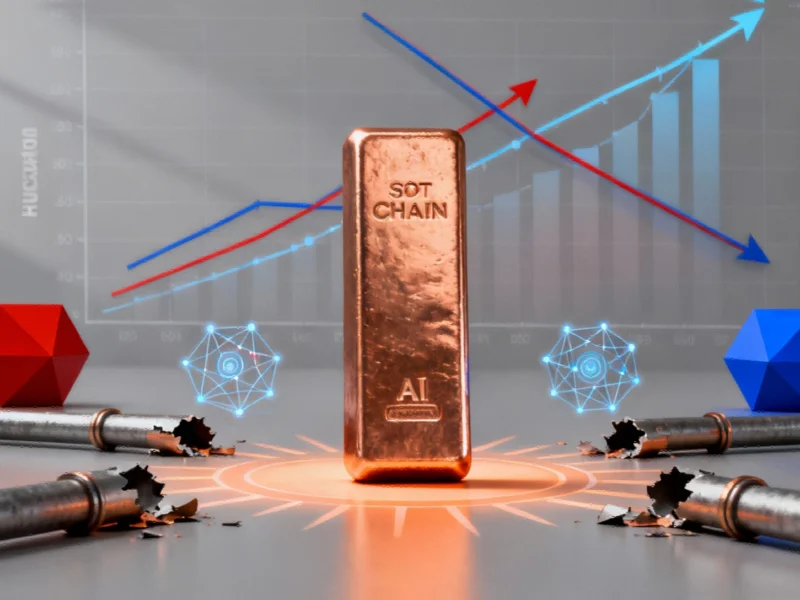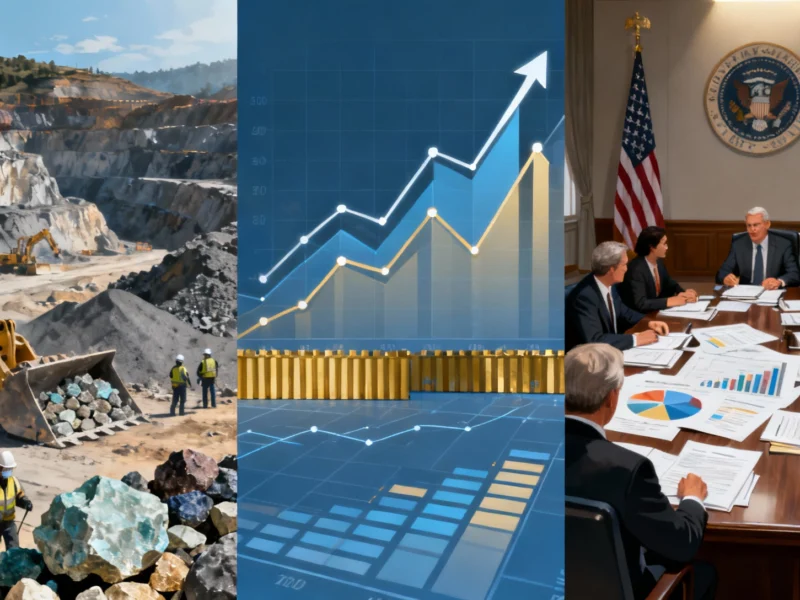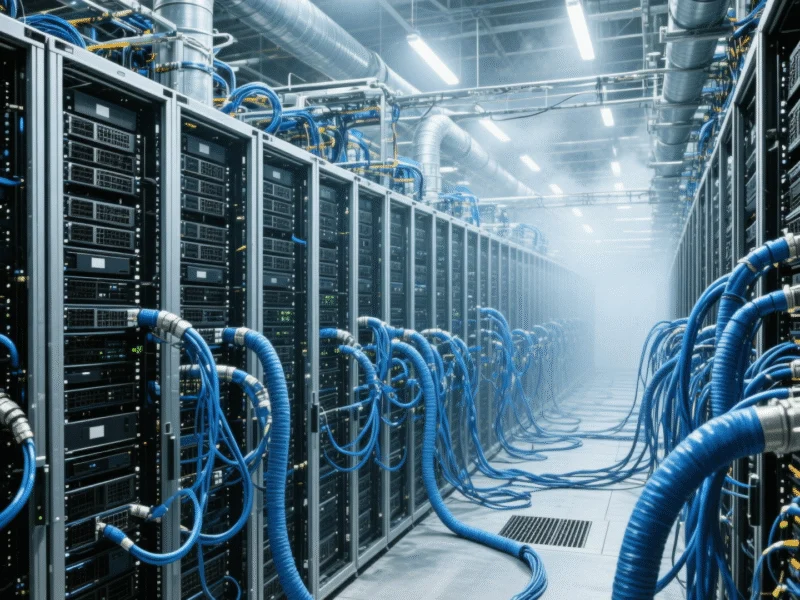Strategic Metal Under Pressure
The recent escalation in U.S.-China trade tensions has cast a spotlight on copper’s increasingly precarious position in global markets. As artificial intelligence infrastructure, defense manufacturing, and clean energy transitions converge to drive unprecedented demand, supply chain vulnerabilities are becoming impossible to ignore. London Metal Exchange CEO Matt Chamberlain emphasized that current market dynamics reveal fundamental weaknesses in global copper infrastructure that could have far-reaching consequences for technological advancement and economic stability.
According to recent analysis, the copper market faces a significant supply squeeze as AI development and green energy initiatives accelerate simultaneously. Chamberlain noted that supply tightness has pushed spot prices above three-month futures in several metals markets, creating a backwardation pattern that contradicts prevailing market expectations. “The market consensus is that there absolutely is a medium-term demand driver,” Chamberlain told CNBC, highlighting the broad-based nature of copper demand from basic construction to cutting-edge AI applications.
The AI Revolution’s Metallic Foundation
Copper’s role in the AI boom extends far beyond simple wiring. The metal is essential for semiconductors, high-performance computing cables, and advanced cooling systems that enable AI infrastructure to function efficiently. This technological demand converges with other major trends, including what analysts describe as unprecedented data center expansion globally, creating a perfect storm for copper consumption.
Wood Mackenzie’s research indicates global copper demand could surge by 8.2 million tonnes annually to 42.7 million tonnes over the next decade—a 24% increase that could potentially reach 40% growth by 2035. Charles Cooper, the firm’s copper research director, warned that copper is becoming the “strategic bottleneck” of the global energy transition, with supply chain disruptions likely to have acute economic impacts if not addressed urgently.
Western Production Renaissance
In response to these challenges, Western producers are reevaluating their manufacturing footprints and investment strategies. Chamberlain highlighted increased focus on delivery location diversity at the LME and conversations among Western producers about reinvesting in smelting capacity. The recent discussions between Europe’s largest copper producer Aurubis and the Trump administration about building a new U.S. copper smelter—potentially with government support—exemplifies this strategic shift.
The German company’s new copper recycling facility in Richmond County, Georgia represents part of a broader push into North American copper processing. However, Chamberlain noted that environmental standards sometimes constrain Western production expansion. “One thing we are looking at is whether we can discover a sustainability premium,” he observed, suggesting that Western smelters investing in sustainable practices might eventually command market recognition for their environmental investments.
Global Supply Chain Reconfiguration
The current supply dynamics occur against a backdrop of broader technological transformation, including challenges in global technology services sectors that intersect with industrial production. Chamberlain described the situation as “fairly multifaceted,” with underlying technological advances sometimes favoring metals demand and sometimes creating substitution pressures.
These complex interactions manifest daily in market pricing and availability. The convergence of four major trends—AI infrastructure build-out, increased defense spending, rapid industrialization in India and Southeast Asia, and the renewable energy transition—creates both unprecedented demand and significant price volatility risks. As industry leaders like technology executives champion AI as a career catalyst, the physical infrastructure requirements, particularly copper-intensive components, become increasingly critical to real-world implementation.
Strategic Implications and Future Directions
The fundamental question Chamberlain raised—”How do we ensure a diversity of supply?”—resonates across national governments and industrial sectors. The recent U.S.-China trade tensions over rare earth minerals provide instructive parallels for copper market participants. Both cases highlight the strategic vulnerability that arises when critical materials depend on concentrated supply sources or face geopolitical disruptions.
Cooper’s warning that failure to act risks turning “the metal of electrification into the metal of scarcity” underscores the urgency of addressing these supply challenges. As nations and corporations navigate this complex landscape, the solutions will likely involve combinations of increased recycling, production capacity expansion, technological innovation in extraction and processing, and potentially new pricing mechanisms that recognize sustainability investments.
The copper market stands at a critical juncture where technological ambition meets physical constraint. How governments, investors, and industry participants respond to these challenges will determine not only copper’s price trajectory but the pace and feasibility of multiple technological transitions simultaneously reshaping the global economy.
Based on reporting by {‘uri’: ‘cnbc.com’, ‘dataType’: ‘news’, ‘title’: ‘CNBC’, ‘description’: ‘CNBC International is the world leader for news on business, technology, China, trade, oil prices, the Middle East and markets.’, ‘location’: {‘type’: ‘place’, ‘geoNamesId’: ‘5101760’, ‘label’: {‘eng’: ‘New Jersey’}, ‘population’: 8751436, ‘lat’: 40.16706, ‘long’: -74.49987, ‘country’: {‘type’: ‘country’, ‘geoNamesId’: ‘6252001’, ‘label’: {‘eng’: ‘United States’}, ‘population’: 310232863, ‘lat’: 39.76, ‘long’: -98.5, ‘area’: 9629091, ‘continent’: ‘Noth America’}}, ‘locationValidated’: False, ‘ranking’: {‘importanceRank’: 14205, ‘alexaGlobalRank’: 270, ‘alexaCountryRank’: 92}}. This article aggregates information from publicly available sources. All trademarks and copyrights belong to their respective owners.



